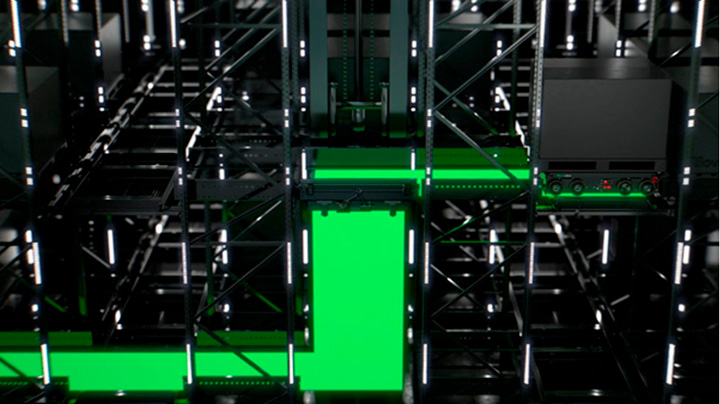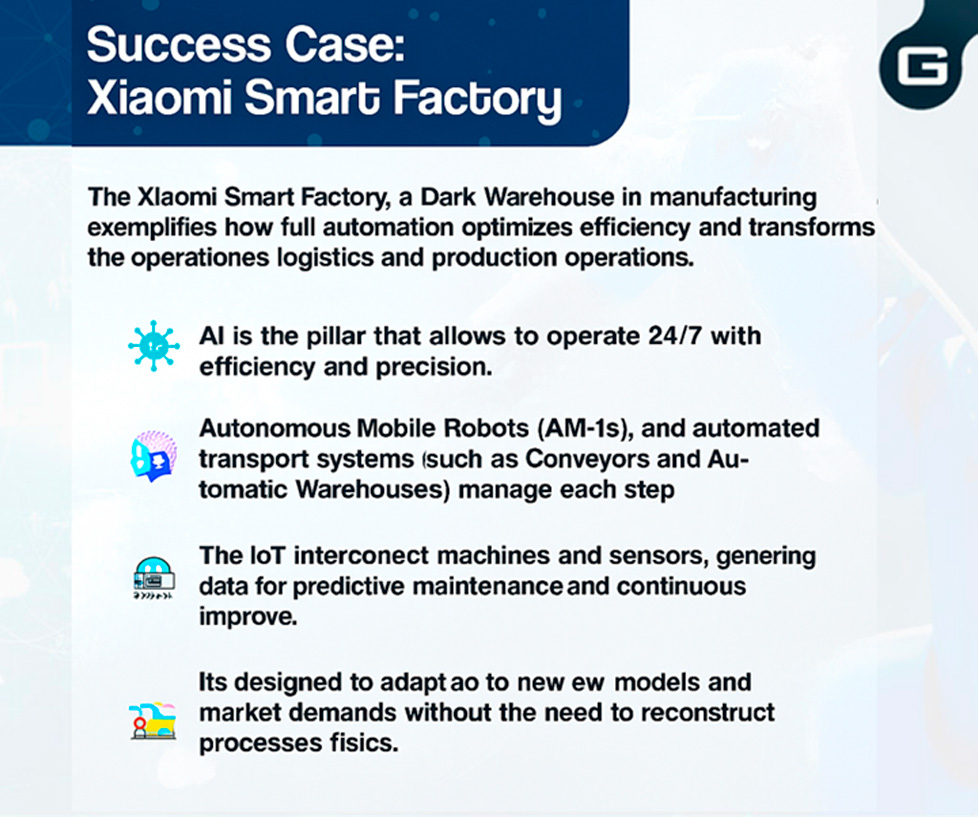Defining what a Dark Warehouse is, how it operates, and what benefits it offers to modern logistics is essential to understanding the future of supply chain transformation. Below, we provide a comprehensive overview—including success cases of warehouses already operating under this model.

According to The Business Research Company, the global warehouse automation market is projected to reach $36.48 billion, largely driven by the sustained growth of e-commerce and the increasing need for more agile, secure, and scalable logistics operations. This trend reflects a profound shift in how companies manage intralogistics processes—where isolated automation is no longer enough. Today, fully integrated, intelligent, and self-sufficient ecosystems are the new standard.
This is where Dark Warehouse systems gain relevance—offering some of the most advanced, fully automated environments in the industry. They operate without direct human intervention, relying on high levels of interconnectivity and coordination by combining technologies such as automated storage systems, robotics, and AI-powered sensors to ensure continuous, precise, and efficient operations.
What Is a Dark Warehouse and How Does It Operate?
A Dark Warehouse is a logistics facility that functions entirely autonomously—without lighting or on-site personnel. These facilities can operate in complete darkness, which results in significant energy savings and operational efficiency.
All logistics processes—from receiving, processing, and storing products to order picking and dispatch—are managed by an interconnected system of disruptive technologies. Manual tasks are replaced by robotic and automated systems, all monitored through intelligent digital platforms.
What Technologies Power the Dark Warehouse Ecosystem?
Today, technologies such as AGVs (Automated Guided Vehicles), AMRs (Autonomous Mobile Robots), Artificial Intelligence (AI), and the Internet of Things (IoT) are the key enablers of Dark Warehouses. The synergy between these tools is what allows warehouses to operate autonomously, intelligently, and in real time—redefining the future of logistics and supply chain management.
According to Gartner, by 2025, over 50% of large-scale warehouses worldwide will have implemented some form of advanced AI-enabled automation.
Each of these technologies offers great value on its own—but when combined, their potential multiplies. A powerful example is AIoT (Artificial Intelligence of Things), the convergence of AI and IoT, which creates a more intelligent, autonomous, and predictive ecosystem.
Key Benefits of Dark Warehouses
1. Uninterrupted Operations
By removing the dependency on human shifts, processes become continuous and uninterrupted. Intelligent systems such as AGVs and AMRs can recharge autonomously at designated stations—maintaining seamless operation.
2. Precision and Error Reduction
Automation eliminates human error, increasing accuracy and offering real-time visibility. Connected sensors and Warehouse Management Systems (WMS) monitor every product and operation with precision—ensuring exceptional logistical control.
3. Energy Efficiency
These facilities require no lighting or constant climate control, resulting in significant energy savings.
4. Lower Operational Costs
By automating repetitive tasks, human talent can be reallocated to higher-value roles—further reducing operational costs and increasing overall efficiency.
5. Flexible Scalability
As business needs grow, automated systems can be expanded or reconfigured with minimal disruption. Dark Warehouses can handle vast SKU volumes as needed—without compromising performance.
6. Smarter Decision-Making
Through advanced analytics and AI, companies can optimize inventory, forecast demand, and continuously enhance warehouse performance.

More than just a symbol of innovation, Dark Warehouses represent the future direction of the industry. With the convergence of disruptive technologies, businesses today can respond faster to market demands, adapt quickly to change, and deliver exceptional service—while creating safer, smarter work environments.
For professionals in the sector, embracing these technologies is no longer optional, it's essential. Staying aligned with innovation through strategic adoption of intelligent systems is the key to succeeding in the digital transformation era.
Posted by: G.I.Eicom
Leaders in Material Handling & Intralogistics Solutions